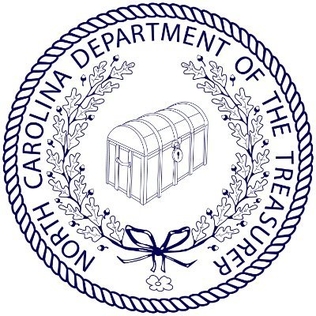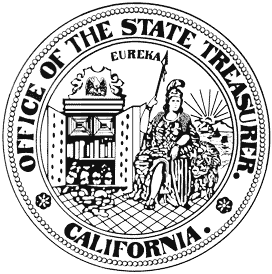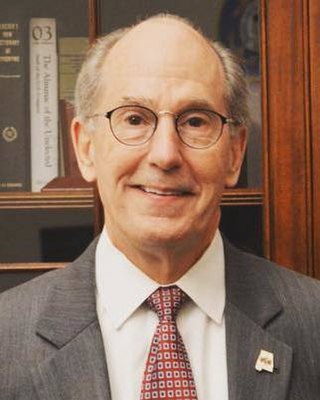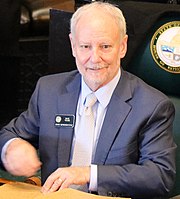
The governor of Michigan is the head of government, and chief executive of the U.S. state of Michigan. The current governor is Gretchen Whitmer, a member of the Democratic Party, who was inaugurated on January 1, 2019, as the state's 49th governor. She was re-elected to serve a second term in 2022. The governor is elected to a four-year term and is limited to two terms.

The North Carolina State Treasurer is a statewide elected office in the U.S. state of North Carolina responsible for overseeing the financial operations of state government. The current state treasurer is Dale Folwell.

The treasurerof Australia, also known as the Federaltreasurer or simply the treasurer, is the minister of state of the Commonwealth of Australia charged with overseeing government revenue collection, federal expenditure and economic policy as the head of the Department of the Treasury. The current treasurer is Jim Chalmers, who was selected by Prime Minister Anthony Albanese in May 2022 following the 2022 Australian federal election.

The government of Maryland is conducted according to the Maryland Constitution. The United States is a federation; consequently, the government of Maryland, like the other 49 state governments, has exclusive authority over matters that lie entirely within the state's borders, except as limited by the Constitution of the United States.

The state treasurer of California is a constitutional officer in the executive branch of the government of the U.S. state of California. Thirty-five individuals have held the office of state treasurer since statehood. The incumbent is Fiona Ma, a Democrat. The state treasurer's main office is located in the Jesse M. Unruh State Office Building in Sacramento.

The treasurer and receiver-general of Massachusetts is an elected constitutional officer in the executive branch of the U.S. state of Massachusetts. Originally appointed under authority of the English Crown pursuant to the Charter of the Massachusetts Bay Company, the office of treasurer and receiver-general became an elective one in 1780. Sixty-one individuals have occupied the office of state treasurer over the ensuing centuries. The incumbent is Deb Goldberg, a Democrat who took office January 21, 2015.

The Government of Colorado is organized into three branches: the executive branch of the Governor, the legislative branch of the General Assembly, and the judicial branch of the Supreme Court and lower courts. This government was created by the Constitution of the State of Colorado, and allows for direct participation of the electorate by initiative, referendum, recall and ratification.

The Tennessee Secretary of State is an office created by the Tennessee State Constitution. The Secretary of State is responsible for many of the administrative aspects of the operation of the state government of Tennessee. The current Secretary of State is Tre Hargett.

The Oklahoma State Auditor and Inspector is an elected Constitutional officer for the U.S. State of Oklahoma. The State Auditor and Inspector is responsible for auditing and prescribing bookkeeping standards of all government agencies and county treasurers within Oklahoma. The office in its current form is a consolidation of the office of State Auditor with that of the office of State Examiner and Inspector, both of which dated back to statehood in 1907. The two positions were combined in 1979 after passage of State Question 510 in 1975. Tom Daxon was the first person to hold the combined office and the first Republican as all previous occupants of either position were Democrats.

The Oregon state treasurer is a constitutional officer within the executive branch of the government of the U.S. state of Oregon, elected by statewide vote to serve a four-year term. As chief financial officer for the state, the office holder heads the Oregon State Treasury, and with the Governor and Secretary of State, serves on the Land Board.

The Pennsylvania state treasurer is the head of the Pennsylvania Treasury Department, an independent department of state government. The state treasurer is elected every four years. Treasurers are limited to two consecutive terms.

The government of Indiana is established and regulated by the Constitution of Indiana. The state-level government consists of three branches: the judicial branch, the legislative branch, and the executive branch. The three branches share power and jointly govern the state of Indiana. County and local governments are also constitutional bodies with limited authority to levy taxes, pass legislation, and create and maintain local public infrastructure.

The Government of Tennessee is organized under the provisions of the 1870 Constitution of Tennessee, first adopted in 1796. As set forth by the state constitution, administrative influence in Tennessee is divided among three branches of government: executive, legislative, and judicial.
The following table indicates the party of elected officials in the U.S. state of Colorado:
The Indiana Treasurer of State is a constitutional and elected office in the executive branch of the government of Indiana. The treasurer is responsible for managing the finances of the U.S. state of Indiana. The position was filled by appointment from 1816 until the adoption of the new Constitution of Indiana in 1851, which made the position filled by election. As of 2023, there have been fifty-five treasurers. The incumbent is Republican Dan Elliott who has served in the position since January 9, 2023.
In the United States, each state and territory has constitutional officers who lead the state governments of the United States. These officers may be elected or appointed, depending on the position. The number and powers of state constitutional officers varies from state to state, based on the constitution and statutes of each state. State constitutional officers may reside in the executive or legislative branch, while state constitutions also establish the judicial system of the state, including state supreme courts.

David L. Young is an American politician and the current Treasurer of Colorado. He served as a Democratic member of the Colorado House of Representatives, representing District 50 from the time of his appointment on July 28, 2011 to fill the vacancy caused by the resignation of Jim Riesberg until his term ended and he took office as State Treasurer in early 2019. He won a second term as state treasurer in 2022.

The Alabama state treasurer acts as the head banker for the State of Alabama, handling deposits, withdrawals, redemptions of state warrants and investments of state funds. The position was created in 1819 when Alabama became a state. Its constitution established the Office of the Treasurer of State, a position that would be elected by the legislature. Individuals serving as state treasurer were elected annually by the General Assembly from 1819 to 1861. Beginning in 1861, the treasurer was elected biennially from until 1868 and was elected by popular vote for a term of two years in 1868. Arthur Bingham's election in 1868 marked the first time a Republican would hold the office. Kay Ivey in 2002 would become the second Republican to hold the office. The treasurer began to be elected to a four-year term as a result of the 1901 Constitution but could not serve successive terms until a 1968 amendment. In 1950, Sibyl Pool (D) would become the first of seven different women to be elected state treasurer.

The 2022 Colorado State Treasurer election took place on November 8, 2022, to elect the Colorado State Treasurer. Incumbent Democratic Treasurer Dave Young won re-election to a second term, improving on his 2018 results.
The Government of the U.S. State of Nebraska, established by the Nebraska Constitution, is a republican democracy modeled after the Federal Government of the United States. The state government has three branches: the executive, the legislative, and the judicial. Through a system of separation of powers, or "checks and balances," each of these branches has some authority to act on its own, and also some authority to regulate the other two branches, so that all three branches can limit and balance the others' authority. The State Government is based in Lincoln, the capital city of Nebraska.

























